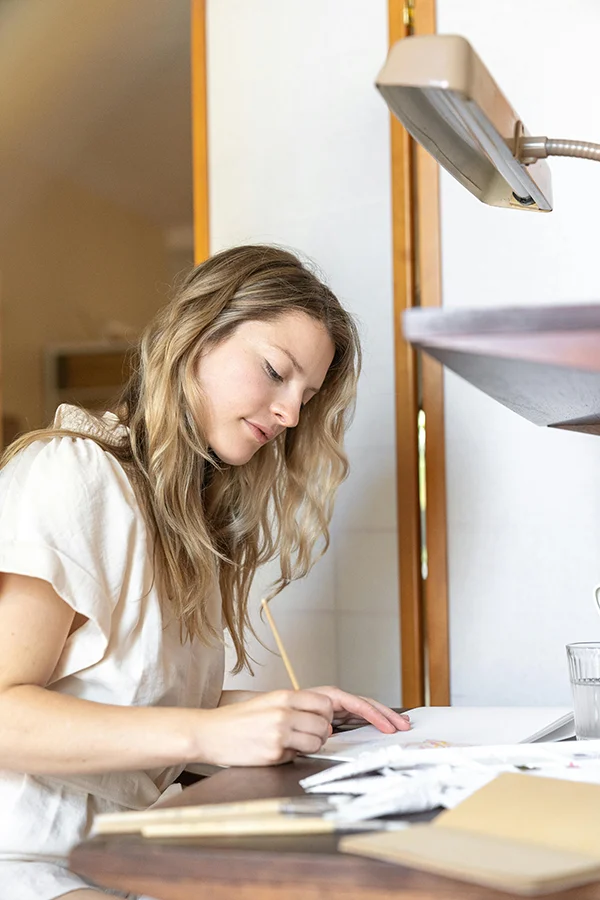
Designing a room for studying is not just about desks, bookshelves, and ergonomic chairs. Light plays a critical role in shaping how well students focus, how long they can stay productive, and how comfortable they feel in their learning environment. Among the many decisions students make when arranging their space, choosing the right lighting might be the most underrated yet most influential.
Good lighting transforms a cluttered corner into an inspiring study hub, while poor lighting leads to strain, fatigue, and reduced motivation. Many learners who search for academic support online with phrases like write my research paper also find themselves looking for practical advice on creating an environment that improves concentration. The simple act of arranging lamps, bulbs, and natural light correctly can be as impactful as having the right textbooks.
Why Lighting Matters for Students
Every student knows the challenge of late-night study sessions. Eyes grow tired, focus slips, and even the strongest coffee cannot counter the exhaustion caused by harsh or insufficient light. Proper lighting reduces eye strain and creates a balanced atmosphere that helps the brain process information more efficiently.
Researchers in environmental psychology have long studied how light affects mood and cognitive function. Bright but balanced illumination supports alertness and mental stamina, while dim or uneven lighting makes it harder to retain information. This is especially important for students balancing long hours of coursework with part-time jobs or extracurricular activities.
Natural Light as a Foundation
The most effective light source is free: daylight. Students designing their study space should prioritize access to windows whenever possible. Natural light not only reduces reliance on electricity but also aligns with circadian rhythms, helping regulate sleep and energy levels.
A desk positioned near a window benefits from even distribution of light, especially during morning and afternoon study periods. Curtains or blinds can help manage glare without blocking the positive effects of sunlight. Exposure to daylight has also been linked to improved mood, which makes studying feel less like a burden and more like a productive habit.
The Importance of Task Lighting
General ceiling lights are rarely enough for focused study. Students benefit from targeted task lighting, such as desk lamps with adjustable arms. These fixtures provide direct illumination for reading, writing, and working on screens without overwhelming the room.
When choosing task lighting, bulb temperature matters. Warm white bulbs create a cozy feel, but they can sometimes encourage relaxation rather than focus. Cool white or daylight-spectrum bulbs mimic natural sunlight, which helps sustain alertness during study sessions. Adjustable brightness is also useful, allowing students to adapt lighting to different times of day or energy levels.
Layering Lights for Flexibility
No single light source serves every purpose in a student’s room. A combination of general, task, and accent lighting creates flexibility and comfort. Overhead fixtures provide overall illumination, desk lamps handle concentrated work, and smaller lights—such as string lights or LED strips—add ambiance.
Layering lights also helps divide spaces within one room. A student who uses the same space for sleeping, relaxing, and studying needs visual cues to shift between activities. Bright desk lighting signals “study mode,” while softer lights around the bed or lounge chair promote relaxation. This separation is essential for students living in small dorms or studio apartments.
Reducing Eye Strain from Screens
With most assignments requiring laptops or tablets, managing screen glare is essential. Blue light from screens already causes enough strain, and poor room lighting makes it worse. Students should avoid studying in complete darkness with only the screen as a light source, as it forces the eyes to overcompensate.
The ideal setup includes balanced ambient lighting that prevents sharp contrast between the screen and surroundings. Desk lamps should be positioned to the side rather than directly behind or in front of screens to reduce glare. Some students also invest in blue-light-filtering bulbs or glasses to further protect their eyes.
Lighting and Student Well-Being
Beyond productivity, lighting strongly influences mental health. Dark, poorly lit rooms can feel isolating and depressing, especially during long winter months. On the other hand, bright and well-lit spaces increase motivation, creativity, and a sense of control.
Students dealing with stress or seasonal mood changes often benefit from light therapy lamps, which mimic natural daylight and help regulate mood. Even small changes—such as replacing outdated bulbs with brighter, energy-efficient LEDs—make a noticeable difference in overall well-being.
Practical Tips for Students Designing Their Room
When arranging lighting for a study-friendly space, students can follow a few practical guidelines:
- Prioritize windows. Arrange desks to face or sit beside natural light sources.
- Choose adjustable lamps. Flexibility in brightness helps adapt to changing needs.
- Match bulb temperature to tasks. Use cooler light for studying and warmer tones for relaxation.
- Layer light sources. Combine overhead, task, and ambient lighting for versatility.
- Minimize glare. Position lamps carefully to reduce screen reflections.
- Consider long-term comfort. Energy-efficient bulbs reduce costs and heat output.
The Balance Between Style and Function
Students often want their study space to reflect their personality through decoration. Lighting can serve both functional and aesthetic purposes. String lights, neon accents, or color-changing LED strips add personality without replacing essential study lighting. The key is balance: creative choices should enhance comfort without sacrificing clarity.
For instance, a student might use a bright desk lamp for homework but switch to softer accent lights when relaxing or socializing. This balance ensures the room feels inviting without losing its primary role as a study space.
How Lighting Shapes Habits
The long-term influence of lighting lies in how it shapes study habits. A well-lit environment encourages students to sit down at their desk rather than avoid it. When lighting feels comfortable, studying becomes more approachable. Over time, these small environmental choices create lasting academic routines.
Lighting also extends a space’s usability. A student with a flexible lighting setup can study effectively in the early morning, late at night, or during cloudy days without losing productivity. This adaptability is particularly valuable in college, where schedules are unpredictable and workloads vary.
Final Thoughts
The role of lighting in designing a student-friendly room goes beyond decoration. It directly influences focus, comfort, and even long-term learning habits. Natural light provides the strongest foundation, while layered and adjustable artificial lighting ensures flexibility. From reducing eye strain to improving mood, good lighting is a powerful tool every student should prioritize.
Designing with light is an act of self-care as much as a practical decision. Students who create well-lit study environments give themselves an advantage not just in their coursework but also in their overall well-being. A bright, thoughtfully illuminated space becomes more than a room—it becomes a foundation for success.






